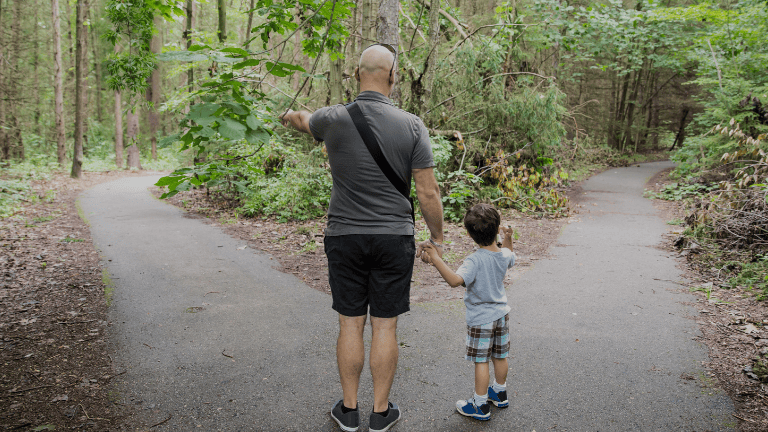Why Required Minimum Distributions Matter
You’ve spent years building your nest egg in tax-deferred retirement accounts, your IRA, 401(k), maybe even TSP. It feels like free money. But once you hit your 70s, a new rule kicks in: Required Minimum Distributions (RMDs). And they’re far from “nice-to-have.” The IRS requires withdrawals starting at age 73, and missing or mismanaging them can blow up your retirement plans instantly.
Let’s break it all down: what RMDs are, why they’re critical, how to calculate them exactly, and the smartest ways to minimize their tax and financial impact.
Listen Now: iTunes | Spotify | iHeartRadio | Amazon Music
What Exactly Are Required Minimum Distributions?
Required Minimum Distributions (RMDs) are the IRS’s way of making sure retirement funds don’t sit forever tax-deferred. Once you reach a certain age, you’re forced to start taking taxable withdrawals from your traditional IRAs or employer-sponsored plans like 401(k)s.
Why? Because decades of tax‑deferred growth mean big tax savings. Required Minimum Distributions ensure those deferred taxes eventually get paid.
No rollbacks allowed: Once withdrawn, you can’t return RMDs to the account, they’re permanent.
When Do RMDs Start?
Thanks to the SECURE 2.0 Act, the timeline shifted:
Before 2023: RMDs began at age 72.
Starting 2023: The starting age moved to 73.
From 2033 onward: It will rise to 75 for those born in 1960 or later
Key Deadline Tips
Your first Required Minimum Distribution can be delayed until April 1 of the year after you reach RMD age, but delaying means you will owe two RMDs in the same year. After your first RMD, all future withdrawals must be completed by December 31 of each year.
Although allowed, delaying your first RMD is often a mistake because doubling up distributions can spike your taxable income all in one year.
How to Calculate Your Required Minimum Distribution
The calculation is straightforward, but precision matters.
Find your account balance as of December 31 of the prior year.
Determine your distribution period based on your age using the IRS tables (Uniform Lifetime, Joint and Last Survivor, or Single Life).
Divide the account balance by the distribution period to find your required withdrawal.
Example:
If you are 75 with $2 million in your IRA at year end and your distribution period is 24.6, your RMD is approximately $81,300 ($2 million divided by 24.6).
If you have multiple accounts, you calculate each account’s RMD separately. For IRAs, you can withdraw the total from any one account if you prefer, but employer plans such as 401(k)s and inherited accounts must each have their own RMD taken directly.
Our partner custodian also offers a solid Required Minimum Distribution Calculator that you can use.
Penalties for Missing RMDs
This is where things can get expensive. The old penalty was 50 percent of the missed amount, but the IRS has reduced it.
The penalty is now 25 percent of the shortfall if you miss or under withdraw.
The penalty can be reduced to 10 percent if corrected promptly, usually by filing Form 5329 and paying the shortfall within two years.
Missing your RMD? Act quickly. The difference between a 25 percent penalty and 10 percent could mean saving tens of thousands of dollars.
Smart Strategies to Manage RMDs
Here is how to make Required Minimum Distributions work for you instead of against you.
Qualified Charitable Distributions (QCDs)
Donating directly from your IRA to a charity reduces your RMD amount and your taxable income. You can begin QCDs at age 70 and a half, even before you must start RMDs. If you are already giving to charitable causes, this can be an excellent way to maximize your impact while reducing taxes.
Roth Conversions
Moving funds from your traditional IRA into a Roth IRA can reduce future RMDs since Roth IRAs do not require distributions during the account owner’s lifetime. This strategy can also lower the tax burden for your heirs. Be aware that the amount converted is considered taxable income and could increase your Medicare premiums. Always take your current year’s Required Minimum Distributions before making a Roth conversion and consult with a tax advisor first.
Timing with Market Conditions
With market volatility, taking RMDs during a down year may force you to sell investments at a loss. One tactic is to liquidate the required amount in advance during stronger market periods and hold it in a stable account until needed.
Employer Plan Delays
If you are still working and do not own 5 percent or more of your employer, you may be able to delay RMDs on employer plans. However, this does not apply to IRAs.
Understanding Inherited RMDs
For inherited IRAs received after 2019, beneficiaries generally must empty the account within 10 years. If the original owner had already started RMDs, you may still need to take annual withdrawals during the 10 year period. This makes Roth IRAs an attractive estate planning option, since withdrawals are tax free and there are no lifetime RMDs for the original owner.
RMDs and Estate Planning
If estate planning is important to you, consider how RMD rules interact with inheritance.
Inherited IRAs now have the 10 year rule for full withdrawal. This means your heirs may be forced to take large taxable distributions during what could be their highest earning years. Sometimes, it makes sense for the account owner to convert funds to a Roth IRA and pay taxes now so heirs can inherit tax free assets later.
A Roth IRA grows tax free, does not require lifetime RMDs for the original owner, and offers heirs more flexibility in managing withdrawals.
Final Thoughts
Required Minimum Distributions are not something you can ignore or leave to chance. They have evolved over the years and so have the strategies for handling them. With new age thresholds, reduced penalties, and tax planning tools like QCDs and Roth conversions, there are opportunities to manage them in a way that benefits your long-term financial plan.
By planning ahead, you can keep your tax bill under control, protect your Medicare premiums, and preserve more wealth for your heirs. The key is to think several steps ahead. What seems like the best move today could have unintended consequences years later. Make sure your RMD plan is part of a broader financial plan and tax strategy that keeps you in control.
Next Steps
If you want help building a personalized RMD strategy or coordinating it with Roth conversions and Medicare planning, schedule a free consultation call with us today to build a strategy personalized to your unique situation.
Frequently Asked Questions About Required Minimum Distributions
What are Required Minimum Distributions?
Required Minimum Distributions are mandatory withdrawals you must take from certain tax-deferred retirement accounts once you reach the IRS-specified age. They ensure taxes are eventually paid on money that has grown tax deferred.
When do I have to start taking Required Minimum Distributions?
As of 2023, you must start taking RMDs at age 73. Starting in 2033, the age will increase to 75 for those born in 1960 or later.
How do I calculate my Required Minimum Distribution?
You take your account balance from December 31 of the previous year and divide it by the IRS life expectancy factor for your age. The result is the amount you must withdraw.
What happens if I miss an RMD?
The IRS can impose a penalty of 25 percent of the amount you failed to withdraw. If corrected quickly, the penalty may be reduced to 10 percent.
Can I avoid Required Minimum Distributions?
You cannot avoid them entirely for tax-deferred accounts, but you can reduce them by using strategies such as Roth conversions or Qualified Charitable Distributions.
Do Roth IRAs have Required Minimum Distributions?
Roth IRAs do not have RMDs during the lifetime of the original owner, making them a valuable tool for tax and estate planning.
Can I take my RMD from just one account?
If you have multiple IRAs, you can withdraw the total RMD amount from one or more of them in any combination. However, RMDs from employer plans like 401(k)s must be taken separately from each plan.
 Client Login
Client Login










